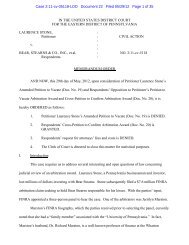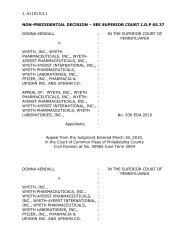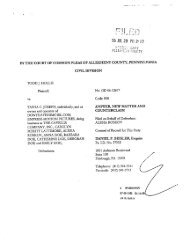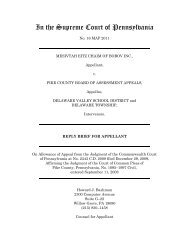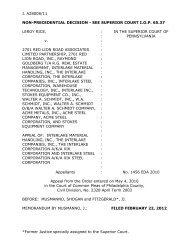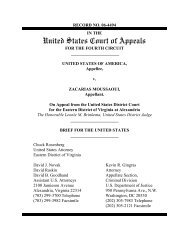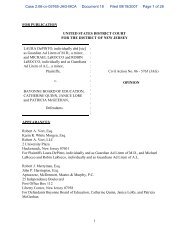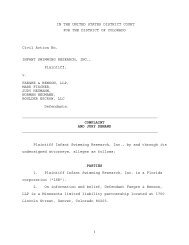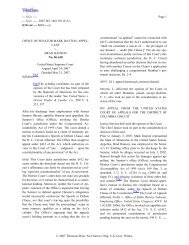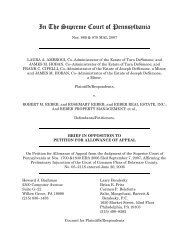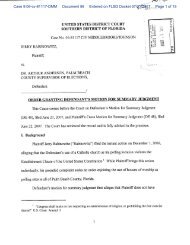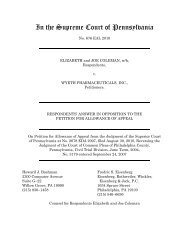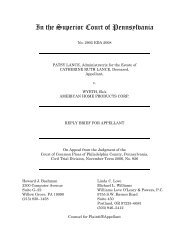petition for rehearing en banc - How Appealing
petition for rehearing en banc - How Appealing
petition for rehearing en banc - How Appealing
Create successful ePaper yourself
Turn your PDF publications into a flip-book with our unique Google optimized e-Paper software.
[Hollinger’s] Audit Committee, thereby breaching their fiduciary duty” and “fraudul<strong>en</strong>tly<br />
depriving [Hollinger] of honest services.” SA 73 ( 21 (Forum/Paxton)); see also id. at 77<br />
( 30 (APC)).<br />
Despite all of this, the panel dismissed the failure-to-disclose theory as a possible basis<br />
<strong>for</strong> a rational juror to convict, in part because such a theory was merely “m<strong>en</strong>tioned in pass-<br />
ing in the in<strong>for</strong>mation.” Slip op. at 13. The panel’s premise is wrong. Substantially id<strong>en</strong>ti-<br />
cal language capped each fraud allegation in the In<strong>for</strong>mation. That language explained to the<br />
jury what the honest-services fraud was alleged to be. See, e.g., SA 68 ( 11(CNHI II)); 70-<br />
71 ( 15 (Horizon)); 75-76 ( 27 (CNHI II)). 2 Based on the instructions and In<strong>for</strong>mation,<br />
the jury would have no reason ev<strong>en</strong> to consider the “theft” allegations in order to convict of<br />
mail fraud, because the non-disclosure theory provided by far the easiest av<strong>en</strong>ue to convic-<br />
tion. As the Supreme Court has noted, the correct Chapman analysis must ask whether the<br />
flawed instructions “so narrow[ed] the jury’s focus as to leave it questionable that a reason-<br />
able juror would look to anything” else. Yates, 500 U.S. at 405-06; see also id. at 406 n.10<br />
(noting that conclusive presumptions t<strong>en</strong>d “to deter a jury from considering any evid<strong>en</strong>ce <strong>for</strong><br />
the presumed fact beyond the predicate evid<strong>en</strong>ce; indeed, to do so would be a waste of the<br />
jury’s time and contrary to its instructions,” citing Sandstrom v. Montana, 442 U.S. 510, 526<br />
n.13 (1979)); cf. Fulminante, 499 U.S. at 313 (K<strong>en</strong>nedy, J., concurring) (noting that errone-<br />
ously admitted evid<strong>en</strong>ce may be so powerful that the jury will be “tempted to rest its decision<br />
on that evid<strong>en</strong>ce alone, without careful consideration of other evid<strong>en</strong>ce in the case”). Simply<br />
asserting that the jury credited the governm<strong>en</strong>t’s evid<strong>en</strong>ce and had no need to rely on the er-<br />
2 In fact, in reversing the two APC counts, the panel noted that “all that the jury had to find in order<br />
to convict [def<strong>en</strong>dants] of honest-services fraud was their failure to level with the board and the<br />
audit committee.” Slip op. at 10. The relevant language of the In<strong>for</strong>mation and the relevant instructions<br />
on APC were id<strong>en</strong>tical to the corresponding language pertaining to Forum/Paxton. In its original<br />
opinion, the panel found the APC and Forum/Paxton fraud allegations so “similar,” and with<br />
“equally compelling evid<strong>en</strong>ce” of guilt, that it saw “no reason to ext<strong>en</strong>d the opinion with a discussion”<br />
of count 7. United States v. Black, 530 F.3d 596, 600 (7th Cir. 2008).<br />
7



